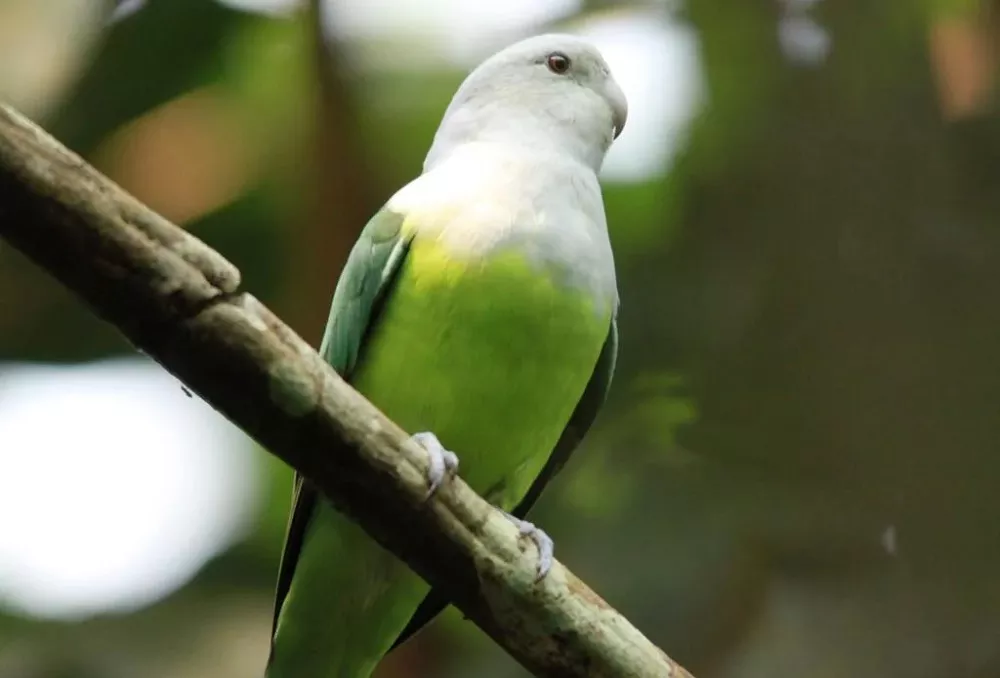The Grey-headed lovebird or Madagascar lovebird (Agapornis canus) is a small species of parrot of the lovebird genus. They are native on the island of Madagascar and are the only lovebird species which are not native on the African continent. They are the smallest of the lovebird species. These birds are beloved for their beautiful plumage, affectionate personalities, and joyful demeanors. In this article, we’ll explore some key facts about these fascinating birds.
Distinctive Appearance:
The Grey-headed Lovebird possesses unique features that make it easily recognizable:
Plumage: Adult Grey-headed Lovebirds exhibit predominantly gray feathers on their head and body, with a slightly paler hue on the underparts. They showcase a vibrant peach-colored face and forehead, as well as bright red feathers on the upper chest and shoulders. The tail feathers display a mix of green and blue shades.
Size: This small parrot measures approximately 14-15 centimeters (5.5-6 inches) in length, with males and females exhibiting similar sizes and plumage.
Distribution and Habitat:
The Grey-headed Lovebird is endemic to Madagascar, specifically found in the central and western regions of the island. It inhabits various forested habitats, including rainforests, dry deciduous forests, and gallery forests. These lovebirds are primarily arboreal, spending their time in the tree canopies.
Behavior and Social Nature:
Monogamous Bonds: Grey-headed Lovebirds form monogamous pairs, showing strong pair bonds with their chosen mates. They engage in mutual preening, affectionate behaviors, and often sit closely together.
Vocalizations: Lovebirds are known for their melodious calls, with the Grey-headed Lovebird producing a range of vocalizations including chirps, whistles, and soft trills. These vocalizations serve as a means of communication within the flock and during courtship displays.
Breeding and Conservation:
Breeding Behavior: Grey-headed Lovebirds construct their nests in tree cavities, using materials such as twigs, leaves, and bark. The female lays a clutch of 3-4 eggs, which are incubated by both parents for approximately 23-26 days. The parents share the responsibilities of feeding and caring for the hatchlings.
Conservation Status: Grey-headed lovebirds are classified as “Least Concern” by the International Union for Conservation of Nature (IUCN), which means that they are not currently considered to be at risk of extinction. However, like many species of parrots, they do face threats from habitat loss and capture for the pet trade. As such, it is important for prospective owners to ensure that they obtain their birds from reputable breeders rather than contributing to the demand for wild-caught individuals.
Ecological Significance:
Seed Dispersal: Grey-headed Lovebirds play a vital role in seed dispersal as they feed on various fruits and berries. By consuming and excreting seeds, they contribute to the regeneration and diversity of plant species within their habitats.
Indicator Species: The presence or absence of Grey-headed Lovebirds can serve as an indicator of the health and integrity of the surrounding ecosystem, highlighting the overall well-being of the habitats they inhabit.
Conclusion:
The Grey-headed Lovebird, with its vibrant plumage, affectionate behavior, and captivating nature, is a true gem of Madagascar. Its presence adds color and charm to the forests and woodlands it calls home. By understanding the characteristics, habitat requirements, and conservation needs of the Grey-headed Lovebird, we can appreciate the importance of preserving the delicate balance of nature and ensuring the survival of this enchanting parrot species for future generations to enjoy.


 Facebook
Facebook  Instagram
Instagram  Youtube
Youtube 